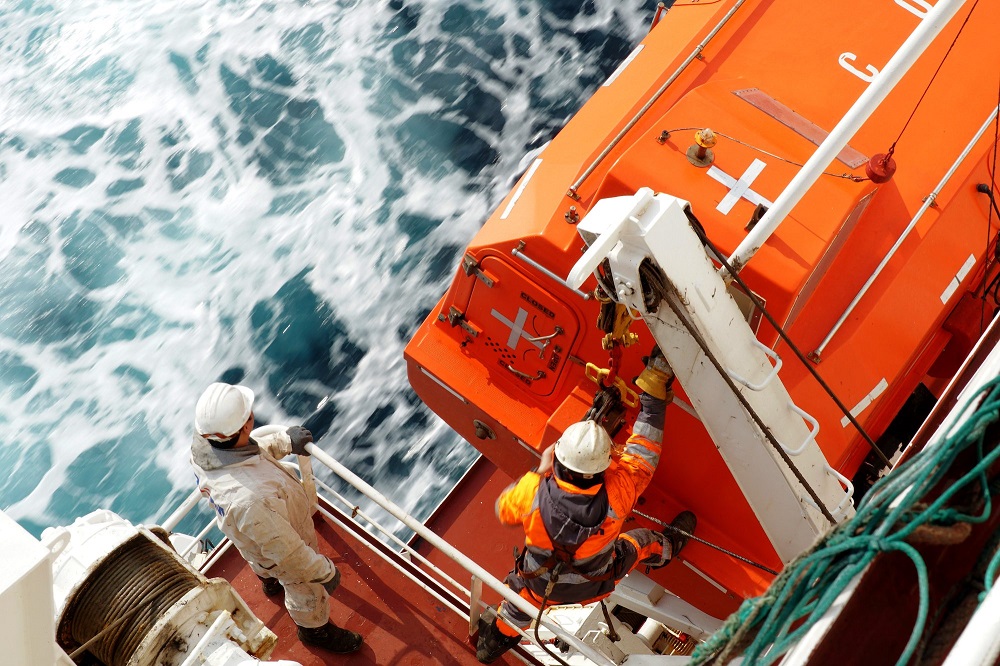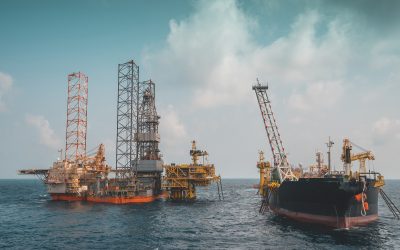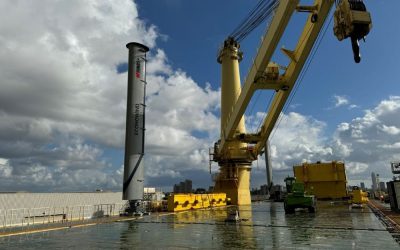In the ongoing evolution of maritime safety protocols, a forthcoming project scheduled for 2024 seeks to redefine the standards governing survival and rescue craft on cargo ships.
The primary objective of this initiative is the conceptualisation and realisation of a dual-function float-free survival craft or module, engineered to furnish a secure environment for up to 40 crew members during emergencies such as fires or other scenarios, whilst being able to ultimately float free in the event of the parent vessel sinking. The project’s scope encompasses the development of a solution capable of withstanding varied weather conditions, ranging from Tropical to North Atlantic and Polar Summer environments.
Central to the project is the recognition of the hazardous implications posed by the embarkation, launching, and recovery of survival and rescue craft on modern cargo ships. The amplification of these challenges arises from the substantial growth in the size of seagoing vessels since the latter half of the 20th century. The resultant increase in height above water accentuates the displacement and movement survival or rescue craft, necessitating a comprehensive re-evaluation of safety measures. This is particularly pertinent for the pendulous movement of the survival craft as the length of the falls reach periodic synchronism with the rolling of the parent vessel, which is, as yet, not considered in any regulatory criteria.
The survival craft envisaged by the scope of the project is not only designed for safety but is also engineered to navigate the complex dynamics associated with cargo ship movements, which with the increase in beam to depth ratios (because of limitations of draught) can include much higher accelerations than in earlier, smaller vessels. The objective is to design a craft that accommodates a broad spectrum of rolling conditions, allowing occupants to embark when the vessel is rolling 2.5 degrees either side of a static heel angle, with a five-second period. These parameters consider the dynamic nature of the parent vessel, characterised by a static heel angle of 25 degrees and a trim that varies due to the diverse metacentric height of different cargo ship types.
A pivotal feature of the project is the aim to implement a float-free launching procedure, premised on the assumption that the parent vessel sinks or capsizes before the craft is released. This procedural innovation augments the likelihood of successful deployment during emergency scenarios, underscoring its critical importance in time-sensitive situations. Furthermore, the craft is designed to endure adverse weather conditions, with prescribed design parameters accounting for wind force Beaufort 6 and waves attaining a significant height of 3 m during embarkation, launching, and while awaiting rescue.
In adherence to industry regulations, the craft will theoretically be engineered to meet all stipulations outlined in the alternative designs for a lifeboat, as permitted in Regulation 5 of SOLAS Ch.I and articulated in the LSA Code 2017. Considerable attention has been given to seat space augmentation to accommodate contemporary anthropometric data, with seating arrangements meticulously devised to accommodate the inclined attitudes of the module during the release phase, ensuring optimal safety for occupants.
Beyond its safety attributes, the craft will also incorporate a flat top with stretcher-compatible access. Additionally, it includes, at a minimum, a winch-only helipad, furnishing a means for evacuation by helicopter or crane to high-sided ships. This multifaceted approach positions the project as a comprehensive solution for the safety and rescue operations of modern cargo ships.
As the project unfolds, universities are invited to actively collaborate, offering students an opportunity to contribute to the forefront of maritime safety research and development. It is essential to note, however, that the Royal Institution of Naval Architects (RINA) is currently engaged in evaluating the project’s viability, with a final decision on whether to proceed pending. The project organisers remain optimistic about its potential impact and anticipate navigating a transformative journey towards a safer maritime future. Updates will follow as the project progresses through the evaluation phase with RINA.






